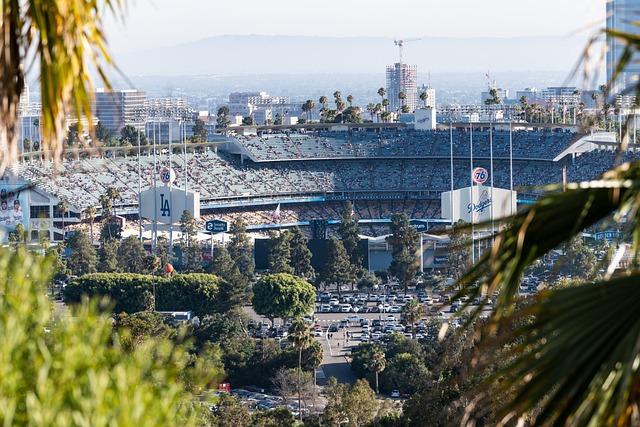Clark County Approval Propels Athletics’ New Las Vegas Ballpark Project Forward
The Oakland Athletics’ vision to establish a cutting-edge baseball stadium in Las Vegas has achieved a major breakthrough with the recent endorsement from Clark County authorities. This regulatory approval is a crucial milestone that clears the way for the team’s potential relocation and stadium construction, signaling strong momentum behind bringing Major League Baseball to the vibrant Las Vegas market. With this green light, the project is poised to move into detailed planning and building stages, edging closer to delivering a premier sports venue for fans in the region.
Clark County’s Endorsement: A Catalyst for the Athletics’ Stadium Growth
Clark County’s official approval represents a significant vote of confidence in the Athletics’ ambitious stadium initiative. This decision follows thorough assessments covering environmental sustainability, economic impact, and community integration, ensuring the project aligns with the county’s long-term development goals. The endorsement not only removes key regulatory barriers but also strengthens investor confidence, accelerating the timeline toward groundbreaking.
Highlighted features of the proposed stadium include:
- Innovative architectural design: Emphasizing eco-friendly construction and enhanced fan experiences.
- Economic stimulation: Anticipated to generate thousands of jobs during both construction and operational phases.
- Community collaboration: Incorporating partnerships with local businesses and creating accessible public spaces.
| Project Element | Expected Outcome |
|---|---|
| Construction Duration | Approximately 18 months |
| Employment Opportunities | Over 3,000 local jobs |
| Seating Capacity | More than 35,000 seats |
| Environmental Certification | LEED Gold Standard |
Projected Economic Growth and Community Advantages from the New Stadium
The stadium project is expected to serve as a powerful economic engine for Las Vegas, with experts forecasting substantial investment inflows and job creation.Initial construction phases will provide thousands of temporary jobs, while the stadium’s operation will sustain permanent roles across hospitality, retail, and event management sectors. Moreover, the ballpark is projected to boost tourism considerably, attracting baseball enthusiasts nationwide and benefiting local enterprises.
Community-focused benefits include:
- Upgrades to transportation infrastructure and public transit systems
- Development of affordable housing initiatives linked to the stadium area
- Expansion of parks and recreational amenities for residents
- Partnerships with schools and youth organizations to promote sports and education
| Benefit Category | Estimated Impact |
|---|---|
| Job Creation (Construction & Ongoing) | 4,000+ positions |
| Annual Tourism Revenue | $75 million |
| Infrastructure Investment | $120 million |
| Affordable Housing Units | 250 planned units |
Mitigating Traffic and Infrastructure Challenges Around the Stadium
Addressing concerns about traffic congestion and infrastructure strain, Clark County and project developers have outlined a complete strategy to ensure efficient transportation and minimal disruption.Investments will focus on road expansions, enhanced public transit options, and increased parking capacity to accommodate the surge of visitors while preserving neighborhood accessibility.
Key initiatives include:
- Widening major access roads leading to the stadium
- Launching shuttle services connecting key transit hubs
- Deploying intelligent traffic signal systems to ease congestion
- Constructing dedicated pedestrian pathways to improve safety and accessibility
This collaborative approach involves close coordination between Clark County, transportation planners, and the Athletics organization to balance urban development with community needs.
| Infrastructure Component | Planned Upgrade | Anticipated Benefit |
|---|---|---|
| Roadway Expansion | Additional lanes on key routes | Higher traffic capacity |
| Public Transportation | Expanded shuttle services | Reduced reliance on personal vehicles |
| Traffic Flow Management | Smart traffic signals | Smoother vehicle movement |
| Pedestrian Infrastructure | Safe walkways and crossings | Improved pedestrian safety |
Strategies to Ensure On-Time Delivery and Stakeholder Collaboration
Maintaining momentum and meeting deadlines for the Athletics’ Las Vegas stadium requires a disciplined project management approach emphasizing transparency and communication. Implementing milestone tracking allows early identification of potential setbacks, enabling timely interventions to keep the project on schedule. Utilizing advanced project management platforms facilitates real-time monitoring of tasks and responsibilities.
Engaging stakeholders actively is equally vital. Regular communication channels and inclusive forums provide opportunities for community members, officials, and investors to stay informed and contribute feedback.Recommended practices include:
- Monthly newsletters summarizing progress and upcoming activities
- Virtual town hall meetings to broaden participation and dialogue
- Dedicated liaison teams to address concerns promptly and maintain open lines of communication
| Key Approach | Advantage |
|---|---|
| Milestone Tracking | Early detection of risks |
| Stakeholder Newsletters | Enhanced transparency |
| Virtual Town Halls | Expanded community involvement |
Final Thoughts: A New Era for Baseball in Las Vegas
With Clark County’s approval secured, the Athletics’ plan for a new Las Vegas ballpark is advancing steadily toward fruition. While challenges remain, this milestone highlights the growing enthusiasm and commitment to relocating the team and constructing a state-of-the-art stadium. Fans, residents, and stakeholders eagerly anticipate the transformation of Las Vegas into a major league baseball destination, enriching the city’s dynamic sports culture.




